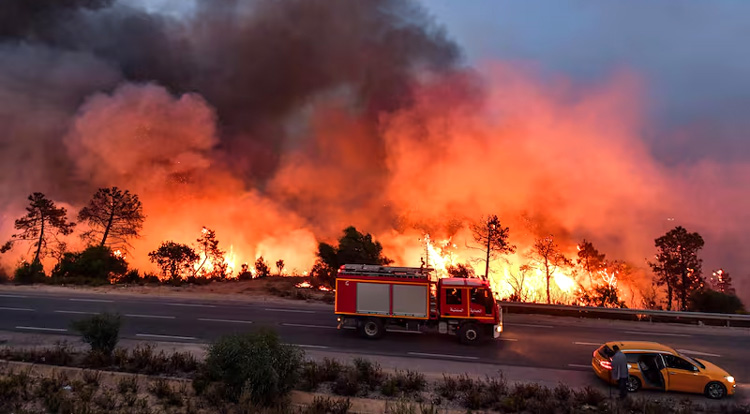Global weather extremes: Floods, wildfires and heatwaves due to climate change ravage regions
Dubai experienced an unprecedented deluge on April 14-15, receiving over a year and a half’s worth of rainfall in just 24 hours.
The downpour inundated the city, including its airport and major highways, leading to tragic consequences with four lives lost. The Al Ain weather station in the United Arab Emirates (UAE) documented 254 mm of rainfall, marking the highest recorded precipitation in 75 years since meteorological records began, as reported by the National Center of Meteorology of UAE. Climate scientists assert that the surge in global temperatures, attributed to human-induced climate change, is fueling an increase in extreme weather occurrences worldwide, such as the recent bout of intense rainfall experienced in Dubai.
The death toll from heavy rains in Brazil’s southern Rio Grande do Sul state jumped to 29 as of May 2 night, with another 60 people missing, according to the state’s civil defence agency. Operators reported electricity and water cuts across the state, and officials detailed numerous incidents of flooded roads, landslides and collapsed bridges as water levels of rivers and streams rose sharply. In some areas, such as valleys, mountain slopes and cities, more than 150 millimetres of rain fell in 24 hours, according to Brazil’s National Institute of Meteorology. Weather across South America is affected by the climate phenomenon El Niño, a periodic naturally occurring event that warms surface waters in the Equatorial Pacific region. In Brazil, El Niño has historically caused droughts in the north and intense rainfall in the south.
At least 123 lives were tragically lost to wildfires in central Chile in February. The devastation followed closely on the heels of Colombia declaring a state of disaster due to wildfires. Scientists emphasise that climate change exacerbates the likelihood of heatwaves and droughts in South America, both of which contribute to the proliferation of wildfires by desiccating the vegetation that fuels these infernos.
A section of a mountainside expressway collapsed on May 1 after a month of heavy rains in a mountainous part of southern Guangdong province in China. Over 56 centimeters (22 inches) of rain has fallen in the past four weeks in the county where the roadway collapsed, more than four times as much as last year. Some villages in Meizhou were flooded in early April, and the city has received additional rain in recent days.
Heavy snowfall and rainfall claimed the lives of at least 80 individuals in Afghanistan and Pakistan, as extreme weather conditions unleash havoc in both nations in February-March. Recent deluges inundated communities, compelling residents to evacuate, while blizzards and landslides in mountainous regions resulted in the closure of key highways.
Across South and Southeast Asia, millions are grappling with sweltering temperatures, as unusually hot weather prompts school closures and poses a significant threat to public health. In India, where a marathon election spanning nearly six weeks is currently unfolding, the Election Commission convened this week with officials from the meteorological agency to strategize on mitigating the heat’s impact on voters. Last year, India experienced severe heatwaves in April and June, resulting in approximately 110 reported deaths attributed to heatstroke.

